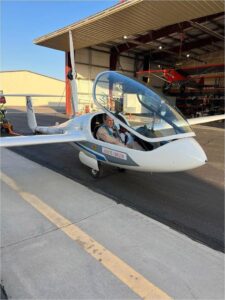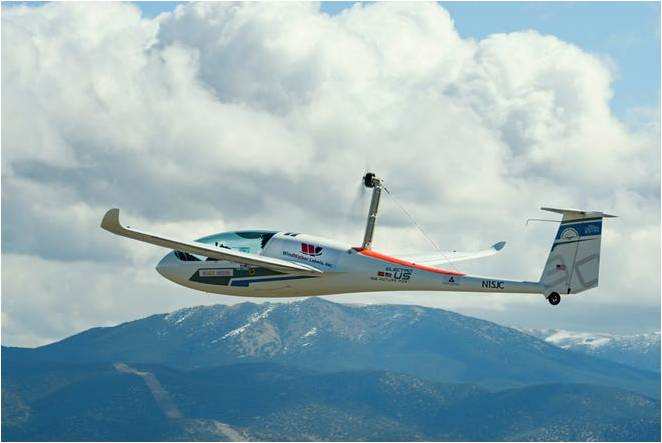Miguel Iturmendi has been exploring the stratosphere and beyond in the Perlan 2 sailplane and his Helios Horizon electrically-launched craft. He flew in the Perlan 2 sailplane in 2018 to over 65,000 feet, and more recently took part in a demonstration flight in that aircraft. His ongoing efforts with the Horizon are increasing altitude records for electric aircraft.
He lives in Florida, where he leads the Helios Horizon project and works on the aircraft, a modified Pipistrel Taurus electric motorglider. For record flights, he takes the craft to Minden, Nevada, where the Perlan 2 resides when it is in the States. The most recent flights took place near Bishop, California, a location for many historic soaring flights.
The spring test campaign demonstrated several flights between 17,500 and 24,000 feet on battery power. The team never used more than 60 percent of the total pack’s energy, indicating future flights could go higher. (After all, you have a sailplane in which you can return to base.)
On his Linked In page, Miguel describes recent progress and his hopes for expanding the flight’s altitudes. “Helios Horizon finished the Spring test campaign demonstrating several flights between 17,500 to 24,000 feet, all test flights using battery power only and less than 60% of the total pack. We are going to use the summer to install several improvements including new batteries 11-12% better density. Our gratitude to all the team members, our sponsors, donors and foundations that made Us the highest multi-crew electric aircraft flying today. We will return to the sky in the fall for higher altitudes!”

Helios Horizon at Minden, Nevada, having established new altitude records for aircraft under 500 kilograms
The Pipistrel has a 49-foot (15-meter) wingspan, a standard-class wing on what would normally be a single-seat sailplane. The Taurus, on which the Helios Horizon is based, is meant as a pleasure touring machine, though. Miguel’s other altitude-seeking aircraft, the Perlan 2, has an 84-foot wing specially designed for extreme high flight. With extended wings, the Horizon will explore the lower edges of the stratosphere, a matter of concern for air travelers because of increasing turbulence. As Miguel reaches upward with his flights, perhaps the meteorological understanding that is sure to follow can be combined with the higher-altitude findings from the Perlan Project to provide enhanced weather briefings.

